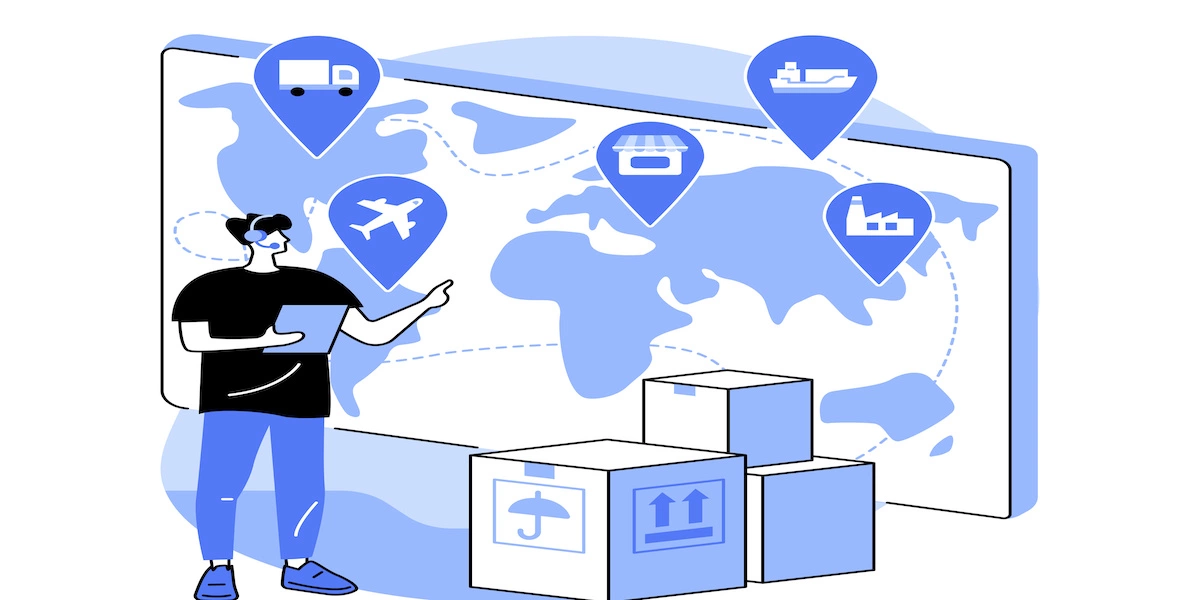The key to managing a fleet successfully is efficient operations. Most fleet managers, however, spend much of their time dealing with cumbersome tasks that don’t boost the bottom line.

Manually performing tasks like routing and data reporting is the least efficient and most costly method for doing them. Luckily, this is where telematics fleet management systems come into play. Automating critical tasks and tracking metrics more easily can help you manage your entire fleet more effectively.
Here are the top six productivity issues faced by fleet managers:
Why Adopt a Telematics Fleet Management System?
1. Administrative Tasks Consume Too Much Time
Most folks don’t enjoy doing administrative tasks, and most fleet managers probably don’t either. Invoicing, quoting, dispatching, scheduling fleet maintenance, and other processes can consume a great deal of time. This can result in other fleet management issues, such as lowered productivity and a lack of time for more strategic tasks.
Paper-based systems in particular add to your administrative load and prevent you from managing other fleet issues. Whenever you had to find a driver’s hours of service logs, how much time did you waste searching through papers? Do you often miss schedules for fleet service and repair because your fleet manager was too busy? Does your fleet manager spend a lot of time finding information about ETAs and other issues that affect your customers?
The more time you spend on these tasks, the less time you have to spend on activities that are more impactful.
Using electronic systems instead of a paper-based system is a great way to complete administrative tasks faster. Automation and digitization can also reduce the risks of human error and communication breakdowns. This can include things like fuel tax and HOS reporting. But it can also mean automating the routing and scheduling of drivers, reminding drivers about maintenance, and much more.
2. Excessive Vehicle Maintenance Costs
Maintaining vehicles in a timely and regular manner is one of the biggest challenges facing service managers. Fleet operators can also keep their fleets productive via regular vehicle maintenance. After all, vehicles that break down without warning can lead to delivery delays and lost productivity. Without regular preventative maintenance, fleet vehicles will suffer excessive wear and tear, which will eventually lead to more costly repairs.
Even a simple mistake, such as not checking tire pressure, can increase fuel consumption, resulting in extra costs. The problem is that keeping track of the maintenance schedule for all your vehicles manually requires a significant amount of time. And that time is what you most likely don’t have when managing other priorities.
3. Fluctuations in Fuel Prices
How long will it be before fuel prices jump again? They’ve almost certainly done so between when this blog was written and when you’re reading it. Fuel remains a major expense even when prices are low. The fluctuating fuel prices make predicting the cost of your fleet’s fuel costs more difficult.
Monitoring fuel use, idle time, driver performance, and driver behavior can help you reduce your fleet’s fuel consumption over time. Not only does the best fleet management software help you monitor these behaviors, it also makes routes more efficient so that drivers can use less fuel per delivery.
4. Maintaining Accurate Communication with Drivers
Getting in touch with drivers when they’re on the road can be difficult. But failure to communicate with them affects the productivity of your fleet. Usually, it takes a lot of time and effort to reach them. Drivers and fleet managers both lose productivity due to miscommunication, which results in a lack of schedule compliance.
When you simplify and streamline your fleet management program by using telematics technology, it suddenly becomes easy to send drivers clear messages, track vehicle locations and statuses, and communicate proactively about any potential disruptions. This way, you are kept informed about your drivers through regular updates, and your drivers know that they’re working with the most up-to-date information possible.
In this way, you can react quickly to unexpected events, avoid major disruptions, and deal with problems promptly. In addition, you can monitor how your fleet is performing via real time data and make improvements if necessary.
5. Maximizing Resource Utilization
Having a large fleet means you have more assets to manage and utilize, making efficiency even more crucial. This can be stressful—you need to get the most out of your resources in order to recoup your investments in them, but it can be difficult to gain visibility into the areas in which your capacity is being underutilized.
Here, having powerful route optimization software can be a huge boon. If you’re not getting the most out of your capacity, it’s often because your routing use cases are too complex for your current processes. When you can upgrade to something that more effectively deals with your various constraints and produces efficient routes anyway, you can maximize your resource utilization and ultimately save money.
6. Handling Data Integration with Your Telematics Fleet Management System
Managing many disparate software systems poses another challenge, especially to enterprises with larger fleets. Efficiency and easy integration are necessary for ensuring interoperability between your various planning and tracking systems. If your fleet management solution is difficult to integrate, productivity will be reduced and telematics data will need to be manually transferred from one system to another.
By integrating all data sources into one platform, you can collect data all in one place. Plus, it is easier to learn how to use a single platform rather than multiple ones. This also makes it easier to utilize your data in new ways, thereby increasing your fleet’s productivity and efficiency.
In the end, it is the responsibility of fleet managers to keep their fleets productive and efficient by keeping a close eye on the numerous challenges that can crop up in delivery management. The right telematics fleet management system can assist fleet managers in overcoming the above-mentioned challenges head-on.
{{cta(‘129251909259′,’justifycenter’)}}
